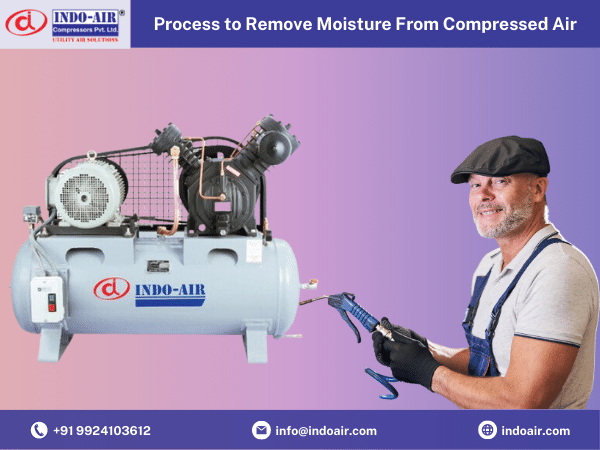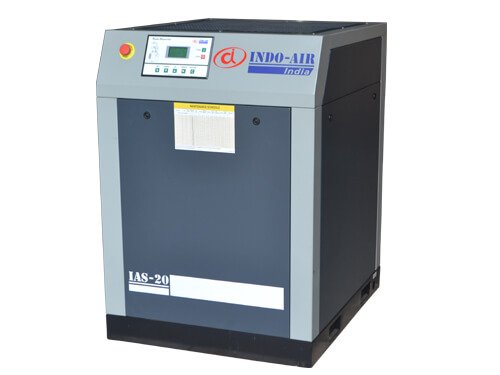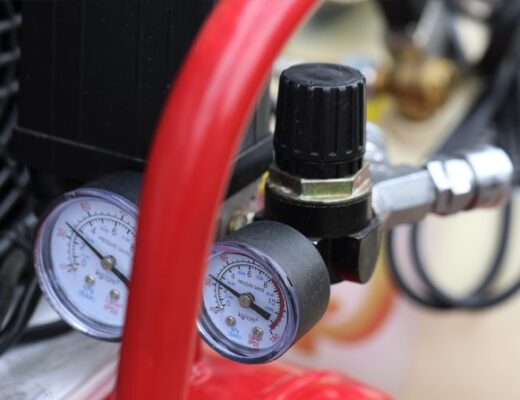Dry air is used by high pressure air compressor systems to create high-quality, usable air. The air should be free of any liquid moisture and have a relative humidity of less than 50% for the majority of compressed air applications. This contributes to reducing systemic corrosion and increasing the lifespan of your equipment. It’s critical to recognise that moisture in compressed air has the potential to harm your tools and the equipment you are using. Moisture destroys air tools by interfering with lubrication, obstructing air control lines, and can cause instrumentation to malfunction. Water entering through the condensed air stream might have an immediate influence on processes.
What problems does moisture cause to the air compressor?
Moisture in compressed air used in manufacturing plants creates difficulties with pneumatic systems, solenoid valves, and air motors, as well as affecting the production process or product. Moisture issues in compressed air lines were just accepted as unavoidable for many years. Following problems can occur due to moisture in a Reciprocating air compressor
As it wipes away lubrication, it causes corrosion and increased wear of moving components in industrial machinery.
Paint sprayed using compressed air can have a negative impact on colour, adhesion, and finish.
Process industries, where numerous processes rely on the effective operation of pneumatic controls, may be jeopardised. Due to corrosion, scale, and blocked orifices, these controls might fail, resulting in product damage or costly shutdowns.
In cold conditions, control wires might freeze, resulting in incorrect control functioning.
Corrosion of air or gas-operated equipment, erroneous readings, and interruption or shutdown of plant activities are all possible outcomes.
Process of Removing Moisture from Compressed Air
To protect your equipment from the previously mentioned problems, moisture removal is essential. Air dryers dry the air to prevent corrosion of your air compressor and other equipment. Which air dryer is best for your company and industry depends on a variety of criteria. Some of the techniques to remove moisture from compressed air are
Cooling Plus Separation
Water condenses in significant amounts as the heated, compressed air cools. This separation requires condensation, which is challenging. An aftercooler is the best option to separate vapour from the large amount of air. Even heat exchangers function if they need to cool hot pressurised air. Instead of condensation, it causes the water to precipitate. Refrigerated dryers perform this task flawlessly.
Over-compression
The air is compressed to a greater pressure throughout this operation than is actually required. It exceeds the intended operating pressure by a wide margin. Air returns to the pressure needed for the job after separation. Over-compression is appropriate given the high energy required by the work technique. When airflow rates are lower, the technique is effective.
Membrane Drying
Gases in the air separate the water vapour by selective penetration. Wet, filtered compressed air condenses on the fibres as it enters the cylinder, creating water vapour. Simultaneously, the dry hair constantly passes through those fibres
Absorption drying
Chemicals like sulfuric acid or sodium chloride are used in this operation. These compounds become bonded to this process whenever water vapour is in close proximity to them. Solid or liquid substances can be used as absorbent materials. Additionally, they are widely used and readily accessible.
Adsorption Drying
In this procedure, the flow of wet air is dried using a hygroscopic or dry substance. Some of the most often utilised materials include activated alumina, silica gel, and molecular sieves. Purge regenerated adsorption dryers, heated purge regenerated dryers, blower regenerated dryers, and heat of compression dryers are examples of dryers that operate in this manner.




